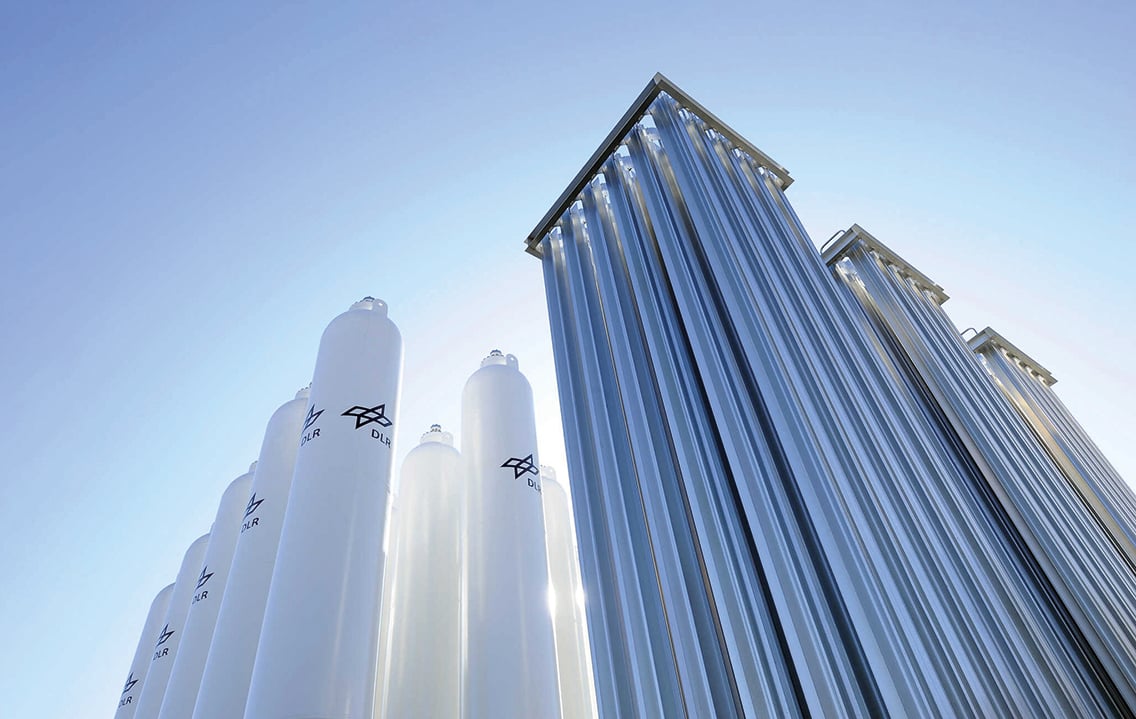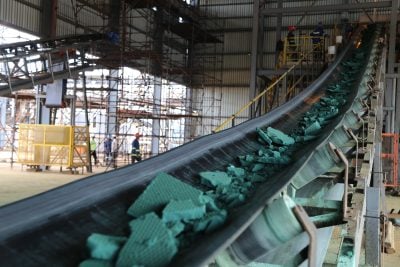This article was produced with the support of Ministry of Energy and Petroleum of the Islamic Republic of Mauritania
In Mauritania’s wind-swept deserts and sun-drenched plains, a green energy transformation is taking root, with the country aiming to reshape both its economic future and its place in the global energy transition. Through bold projects and key partnerships, the Sahara Desert nation is driving toward energy independence and a meaningful role in the global fight against climate change.
At the heart of this shift is green hydrogen, a clean fuel produced using renewable energy. Green hydrogen has the potential to decarbonise heavy industry, clean-up fertiliser production and long-distance transport. However, the production process is energy-intensive, requiring substantial renewable power, and Mauritania’s vast solar and wind resources, together with its close location to the southern shores of Europe, position it to meet this challenge.
With an estimated 400 GW of commercially viable renewable energy, Mauritania’s resource potential exceeds the current total installed power capacity of Germany. This potential is focused on utilising green hydrogen production, in which renewable electricity powers electrolysis, the process of using electricity to split water into hydrogen and oxygen.
While hydrogen isn’t inherently renewable, it becomes a sustainable powerhouse when generated with clean energy. Mauritania is ideal for large-scale, cost-effective green hydrogen production.
“Hydrogen is the key enabler to export and produce large-scale renewable energy and to trade in both regional and international markets,” says Khroumbaly Lehbib, senior advisor in charge of hydrogen development at Mauritania’s Ministry of Energy and Petroleum.
“CWP Global has signed to develop up to 30 GW of electricity for green ammonia and green hydrogen production, while BP, Chariot, and Total are also involved in projects in the range of 10-15 GW,” Lehbib tells African Business in Nouakchott, the capital.
To stave off the worst impacts of climate change, experts stress that global temperatures must be limited to a rise of 1.5 degrees Celsius, demanding net-zero carbon emissions by 2050. Green hydrogen offers a path to decarbonise stubborn sectors like chemicals, iron, steel, and long-haul transport while also storing surplus renewable energy that would otherwise go to waste.
The European Union and key industry players have taken note of Mauritania’s positioning. In February 2024, European Commission President Ursula von der Leyen visited Mauritania, heralding its potential to supply Europe with clean energy through green hydrogen. With a goal to import 10m tonnes of green hydrogen annually by 2030, the EU has beefed up its partnership with Mauritania as part of its own decarbonisation roadmap.
“Partnerships beyond Europe are essential,” said von der Leyen. “To facilitate this shared ambition, we created the Global Gateway investment plan, aiming to mobilise up to 300bn euros worldwide for sustainable, high-quality projects in partner countries. And here, Mauritania comes into play. Mauritania is blessed with resources – space, wind, and sun, and with the right investments and infrastructure, this country can harness over 350 gigawatts of renewable energy from wind and solar alone.”
Europe is actively supporting Mauritania’s green hydrogen push through initiatives to develop necessary infrastructure for production, transport, and commercialisation, with a strong focus on training the local workforce. This initiative includes the EU Hydrogen Bank, launched in 2022, to ensure investment security and foster business opportunities for European and global renewable hydrogen production. Mauritania’s green hydrogen vision is also driven by ambitious partnerships and massive private sector commitments.
CWP Global’s $40bn AMAN project aims to generate 30 GW from hybrid wind and solar sources to produce up to 1.7m tons of green hydrogen and 10m tons of green ammonia annually. Covering 8,500 square kilometres across the Mauritanian desert and coastal regions, AMAN is designed to contribute to the green energy export market but also to supply fresh water and foster local industries through desalination and additional green infrastructure.
The Chariot-TotalEnergies collaboration, Project Nour, targets a 10 GW electrolyser capacity by 2030, with an initial deployment of 3 GW of renewable power to produce 150,000 tons of green hydrogen annually. Strategically located near Nouadhibou’s port and Europe’s energy markets, Nour’s proximity provides favourable conditions for exporting green ammonia and fuelling domestic green steel production. This aligns with the EU’s goal to import 10m tonnes of green hydrogen by 2030, providing a stable market for Mauritania’s output.
Further enhancing Mauritania’s industrial ambitions, a partnership with ArcelorMittal targets the production of 2.5m tons of green steel per year. Additional partnerships, like AMEA Power’s agreements for 100 MW each of solar and wind capacity, offer scalable potential for expanding the country’s hydrogen and green steel capabilities.
With a raft of deals being penned, Nouakchott’s lawmakers have acted fast. Mauritania has become the world’s first country to pass a “hydrogen code” law, setting a precedent for green hydrogen regulation. Ratified by the National Assembly in September 2024, this legislative framework is crafted to attract foreign investment, with VAT and export tax exemptions, substantially reduced import duties on vital equipment, and a progressive corporate tax scheme that starts at 15% and escalates only after projects have recouped their initial investments, maxing out at 30% for “super profits”.
Mauritania’s hydrogen, which is projected to result in a production cost of $2.2 per kilogram by 2030 according to the IEA, places the country among the most cost-effective green hydrogen producers globally, setting a model for North Africa, with the code set to ensure best practice across the value chain.
Yet, challenges remain. Mauritania’s port infrastructure, including Nouadhibou’s deep-sea port, requires significant upgrades to support large-scale green hydrogen exports.
Reduced port fees and other incentives are being considered to enhance the country’s competitiveness as an export hub. Key logistical projects, like much-needed road expansions between Nouakchott and Nouadhibou, are being discussed, based on World Bank analyses identifying infrastructure gaps critical to transporting equipment and exporting hydrogen derivatives.
“We are working closely with partners like the World Bank to analyse the gap in our infrastructure. Upgrading ports and roads is critical to support the construction and export phases of these projects,” says Lehbib.
Building a skilled workforce is equally crucial, and the government is investing in training programs to bolster local expertise.
Subsidies for training in green hydrogen technologies and incentives for self-sustained energy production by hydrogen firms further reflect Mauritania’s ambition for long-term autonomy.
Lehbib says Mauritania’s ambition extends beyond energy export, aiming to transform its economy through high-value sectors like green steel and green ammonia. Currently exporting raw iron ore with minimal value addition, Mauritania could reap significant gains by processing this resource into green steel.
CWP Global, through its AMAN project, is advancing plans to produce millions of tonnes of green iron, establishing Mauritania as a linchpin in Europe’s green steel supply chain. In partnership with Mauritania’s national mining company, SNIM, CWP intends to establish a direct reduced iron hub, maximising Mauritania’s return on its natural resources while aligning with Europe’s green transition.
The ripple effects of green hydrogen development promise economic and social prosperity for Mauritania. Local content strategies, jointly developed by the government and companies like Chariot, aim to embed the value within Mauritania’s economy. This includes targeted skills development in seventeen key areas, designed to boost local participation and foster enduring economic benefits.
Beyond industry, Mauritania’s green hydrogen vision could benefit agriculture and digital infrastructure by providing affordable, sustainable energy.
However, hurdles must be overcome, especially in workforce training to ensure that Mauritanians fully participate in and benefit from new opportunities.
“We are perhaps lagging behind in terms of training systems. That is the work the government has to do now – prepare the training system further to ensure Mauritanians get their share of employment in these projects,” says Lehbib.

 Sign in with Google
Sign in with Google 



